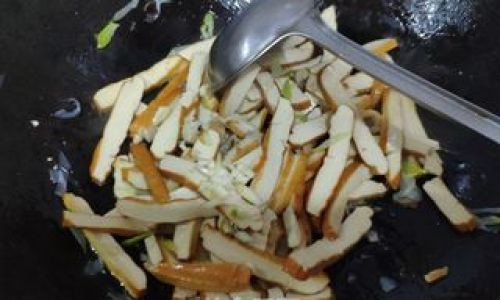Introduction
Castor beans, derived from the Ricinus communis plant, have long been shrouded in both fascination and fear. Revered for their industrial and medicinal applications, these seeds are also notorious for their potential lethality. A common query that arises in discussions about natural remedies and survivalist practices is: Can castor beans be eaten directly? This article explores the scientific, historical, and practical dimensions of this question, shedding light on why raw consumption is universally discouraged and what alternatives exist for harnessing the bean’s benefits safely.
The Anatomy of Castor Beans
Castor beans are not true beans but the seeds of the castor oil plant, a perennial shrub native to Africa but now cultivated globally. Their mottled appearance—often featuring a unique blend of gray, brown, and white hues—makes them visually distinctive. Each seed is encased in a hard, indehiscent shell that protects the embryo within. While the plant itself is admired for its ornamental value, particularly its large, palm-like leaves, the seeds harbor a dark secret: they are among the most poisonous naturally occurring substances known to humans.
The Toxin Behind the Danger: Ricin
The primary reason castor beans cannot be consumed raw lies in their ricin content. Ricin is a glycoprotein composed of two polypeptide chains linked by a disulfide bond. It belongs to a class of toxins called ribosome-inactivating proteins (RIPs), which disrupt protein synthesis by depurinating ribosomal RNA (rRNA). This mechanism cripples the cell’s ability to produce essential proteins, leading to cellular death and, ultimately, organ failure.
A single castor bean contains enough ricin to kill an adult human if ingested without proper processing. The toxin is present in the seed’s endosperm, the nutrient-rich tissue that nourishes the developing embryo. While the seed coat itself is relatively inert, crushing or chewing the bean releases ricin into the digestive tract, where it is rapidly absorbed.

Symptoms of Ricin Poisoning
Ricin poisoning manifests in stages, with symptoms varying depending on the route of exposure (ingestion, inhalation, or injection). In cases of oral ingestion, symptoms typically emerge within 6–12 hours and include:
- Gastrointestinal distress: Nausea, vomiting, abdominal pain, and diarrhea (often bloody).
- Dehydration: Caused by severe fluid loss from vomiting and diarrhea.
- Hypotension: A dangerous drop in blood pressure due to vascular collapse.
- Electrolyte imbalances: Resulting from dehydration and organ dysfunction.
- Liver and kidney failure: Toxic byproducts accumulate as organ systems shut down.
- Neurological symptoms: In severe cases, seizures, coma, or respiratory arrest may occur.
Without immediate medical intervention, ricin poisoning is often fatal. Survivors may face long-term complications, including permanent organ damage.
Historical Context: Ricin as a Bioterrorism Agent
The lethal potential of ricin has not escaped the attention of malicious actors. During World War I, both Allied and Central Powers explored ricin as a chemical warfare agent, though it was never deployed on the battlefield. In the 1970s, the Bulgarian dissident Georgi Markov was assassinated via a ricin-laced pellet fired from a modified umbrella, highlighting the toxin’s suitability for covert operations. More recently, ricin has been intercepted in mail sent to government officials, underscoring its enduring threat as a bioterrorism tool.
Why Can’t Castor Beans Be Processed at Home?
Given the risks, one might wonder if traditional methods—such as boiling, fermenting, or roasting—could neutralize ricin. While heat does denature ricin, achieving complete inactivation requires precise temperature control and duration. For example, industrial castor oil extraction involves:
- Shelling: Mechanical removal of the seed coat.
- Cooking: Roasting at 120–140°C (248–284°F) for 20–30 minutes.
- Pressing: Application of hydraulic pressure to extract oil.
- Refining: Treatment with alkali and bleaching clay to remove impurities.
Home-cooking methods rarely reach the temperatures or times required to eliminate all ricin. Moreover, incomplete inactivation leaves residual toxicity, posing a grave risk to consumers.
The Castor Oil Paradox
If castor beans are so dangerous, how does castor oil—a common laxative and topical treatment—exist? The answer lies in the refining process. During cold-pressing, the oil is extracted without exposing the seeds to high heat, but this method still leaves trace amounts of ricin in the oil. However, the refining process removes these toxins through filtration, neutralization, and steam distillation. Modern castor oil is considered safe for external use and oral consumption in recommended doses, though allergic reactions are possible.
Nutritional Profile: A Double-Edged Sword
Castor beans are nutrient-dense, containing:
- Protein: Approximately 20% by weight, including essential amino acids.
- Fats: Rich in ricinoleic acid, a monounsaturated fatty acid with anti-inflammatory properties.
- Minerals: Calcium, magnesium, and zinc.
- Vitamins: B-complex vitamins and vitamin E.
However, these benefits are irrelevant if the seeds are consumed raw, as the ricin content far outweighs any nutritional advantage. Even processed castor bean meal—used as livestock feed—requires rigorous detoxification to eliminate ricin.

Cultural and Traditional Uses
Despite their toxicity, castor beans have played roles in folk medicine and rituals. In some African and Caribbean traditions, crushed seeds were applied topically to treat skin infections, though this practice is now discouraged due to ricin absorption through the skin. In Ayurveda, castor oil is used as a purgative, but raw seed consumption is strictly prohibited.
Accidental Ingestion: Risks and First Aid
Accidental ingestion of castor beans is rare but occurs, particularly among children attracted to their striking appearance. Symptoms may appear within hours, making prompt action critical. If ingestion is suspected:
- Do not induce vomiting unless instructed by a poison control center.
- Seek emergency medical care immediately.
- Provide details on the quantity ingested and time of exposure.
- Monitor for symptoms such as vomiting, diarrhea, or lethargy.
There is no antidote for ricin poisoning; treatment focuses on supportive care, including intravenous fluids, electrolyte replacement, and organ support.
Modern Applications and Safety Innovations
Advances in biotechnology have reduced the risks associated with castor beans. Genetically modified Ricinus communis strains produce seeds with significantly lower ricin levels, making them safer for industrial use. Additionally, recombinant DNA techniques have enabled the production of ricin-free castor protein for pharmaceutical applications.
Conclusion: The Unambiguous Answer
Can castor beans be eaten directly? The resounding answer is no. Their ricin content renders them unsuitable for raw consumption, and inadequate home processing methods cannot guarantee safety. While castor oil and refined bean products offer therapeutic and industrial benefits, these are derived through rigorous, controlled processes that eliminate toxins. For the average person, the risks of experimenting with raw castor beans far outweigh any perceived benefits.
Final Thoughts
The allure of natural remedies often blurs the line between benefit and danger. Castor beans exemplify this duality: a source of life-saving medicine and a vessel for lethal poison. By understanding their toxicology and respecting their hazards, we can harness their potential without succumbing to their perils. Whether in agriculture, industry, or medicine, the castor bean’s story is a cautionary tale—and a testament to the importance of scientific rigor in navigating nature’s complexities.





0 comments